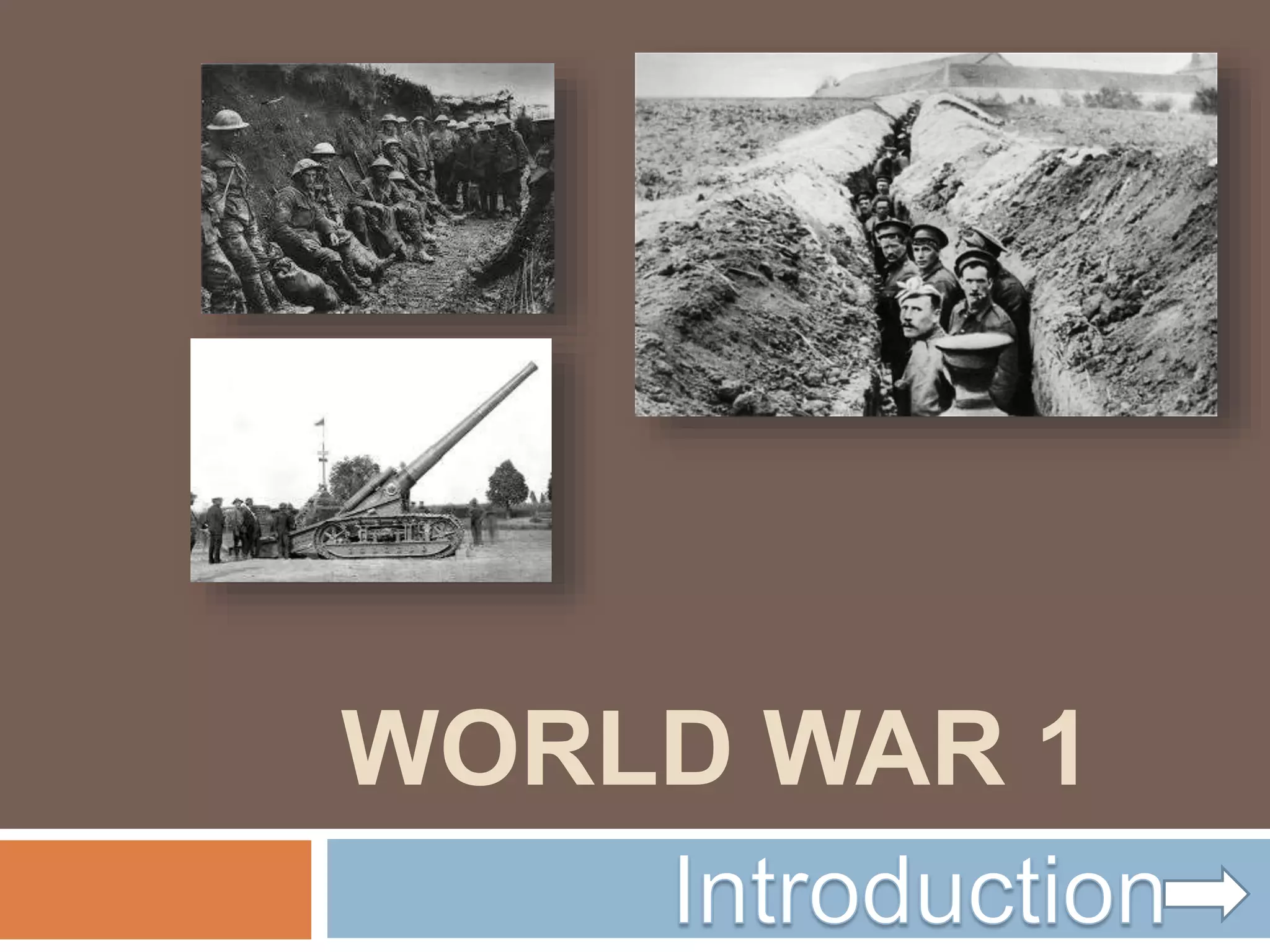World War I, which lasted from July 28, 1914, to November 11, 1918, was a major global conflict primarily centered in Europe, triggered by tensions from militarism, alliances, imperialism, nationalism, and the assassination of Archduke Franz Ferdinand. The war involved complex alliances and led to significant technological advancements in warfare, including trench warfare, tanks, and aerial bombings, with major battles fought across Europe and the Middle East. The war concluded with the Treaty of Versailles in 1919, imposing harsh reparations on Germany and leading to significant geopolitical changes, including the emergence of new nations.




























